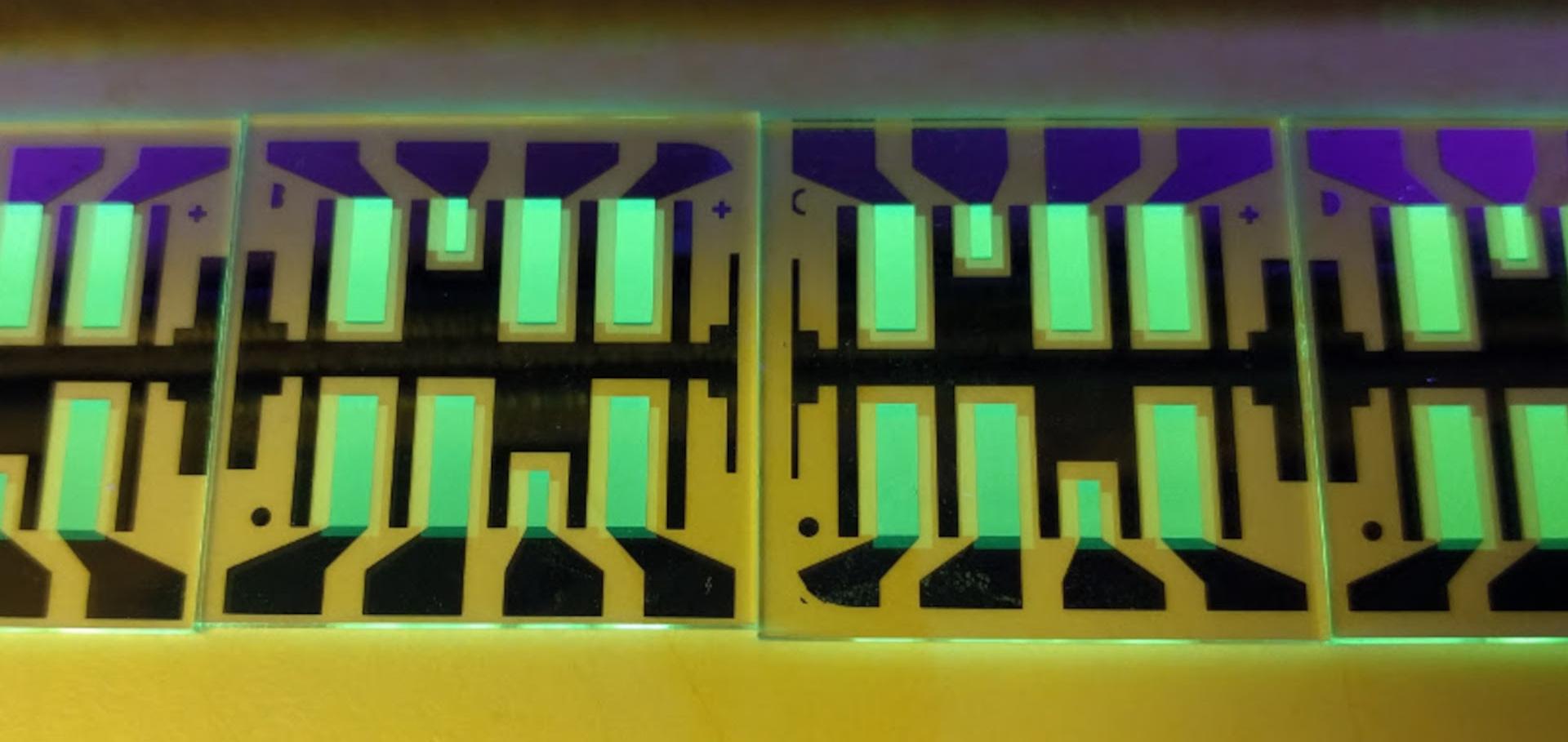Sonnige Aussichten mit organischen Solarzellen
Forschung Wiley 35:S1 (2010) 22-27
Selective absorption enhancement in organic solar cells using light incoupling layers
Journal of Applied Physics 107:5 (2010)
Abstract:
We show that capping layers of tris-(8-hydroxy-quinolinato)-aluminum Alq3 enable increased absorption and photocurrent in organic solar cells (OSCs) when using transparent metal films as top electrodes. Furthermore, by varying the capping layer thickness, the optical field in the OSC is tuned for selective wavelengths, opening a possibility of influencing the external quantum efficiency for specific absorber materials. It is described how a second maximum of the optical field intensity can be utilized, which is a concept significant for tandem solar cells. Indium tin oxide (ITO)-free OSCs are presented which show the influence of capping layer on efficiency, saturation, fill factor, and open-circuit voltage, with numerical calculations supporting the experimental evidence of layer-selective enhancement. © 2010 American Institute of Physics.Controlled current matching in small molecule organic tandem solar cells using doped spacer layers
Journal of Applied Physics 107:4 (2010)
Abstract:
Current matching of the subcells is crucial to optimize the performance of tandem solar cells. Due to the thin film optics of organic solar cells, the position of the two subcells relative to the reflecting electrode becomes a very important issue. This is demonstrated for an indium tin oxide (ITO)/pin/pii/Al structure with thin intrinsic absorbing layers consisting of zinc-phthalocyanine and fullerene C60 and a metal-free lossless recombination contact between the subcells. By keeping the thickness of the absorbing layers constant and changing only the thickness of the inner p-doped transparent layer in 16 steps from 0 to 186 nm, the distance of the ITO-sided subcell from the reflecting electrode (Al) is systematically varied. Thus, the p-doped layer works as an optical spacer between both subcells. The influence of its thickness on the thin film optics is shown in optical simulations and confirmed with current-voltage measurements. If both subcells are separated only by the recombination contact, they are positioned in the first interference maximum of the incident light and the currents of the individual subcells nearly matches. By increasing the spacer layer thickness, the ITO-sided subcell is moved to the first interference minimum, limiting the measured short circuit current density jsc of the tandem solar cell to about 1/2 of its initial value without spacer. At a spacer thickness of about 140 nm, jsc recovers in the second interference maximum to nearly its original value. Within this series, an almost constant high fill factor of about 59% as well as a constant open circuit voltage of 1.06 V is observed, showing that the Ohmic losses in the spacer are negligible. The power conversion efficiency of these devices reaches nearly 4% in the first and approximately 3.6% in the second interference maximum, respectively, in an outdoor test at 1 sun. Furthermore, it is shown that for thicker absorber layers, an optimized current density cannot be reached in the first, but only in the second optical interference maximum, making the presented optical spacer an essential component for efficient organic tandem devices. © 2010 American Institute of Physics.Correlation between morphology and performance of low bandgap oligothiophene:C60 mixed heterojunctions in organic solar cells
Journal of Applied Physics 107:1 (2010)
Abstract:
We investigate the end-capped oligothiophene derivative α,ω -bis-(dicyanovinylene)-sexithiophene with ethyl side chains (DCV6T) as donor material in heterojunctions with C60. The effect of the substrate temperature on the morphology and related photophysical properties of single DCV6T and mixed DCV6T:C60 layers is investigated. Single layers of DCV6T show crystalline features in UV-visible absorption and x-ray diffraction when grown on a substrate heated to 90 °C. Investigations of DCV6T:C60 mixed layers by atomic force microscopy, UV-visible absorption, and photoluminescence measurements reveal that the elevated substrate temperature induces an increased phase separation between the two materials with larger domain size and higher surface roughness. Based on these observations, we present mixed heterojunction solar cells where the power conversion efficiency (ηPCE) is increased from 1.6% to 3.8% by increasing the substrate temperature from 30 to 90 °C, respectively. © 2010 American Institute of Physics.Aging of flat heterojunction zinc phthalocyanine/fullerene C60 organic solar cells
Organic Electronics 11:4 (2010) 539-543


